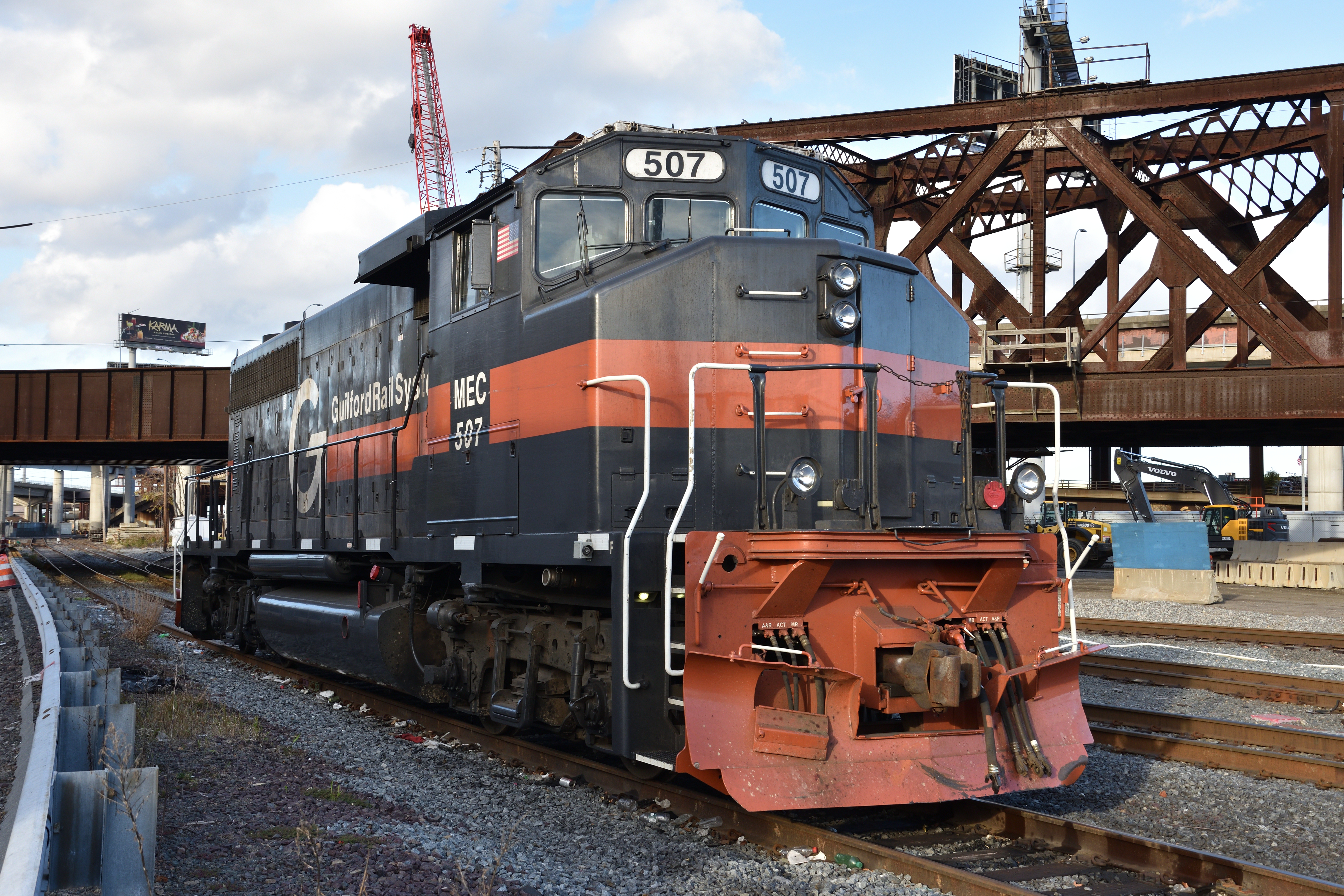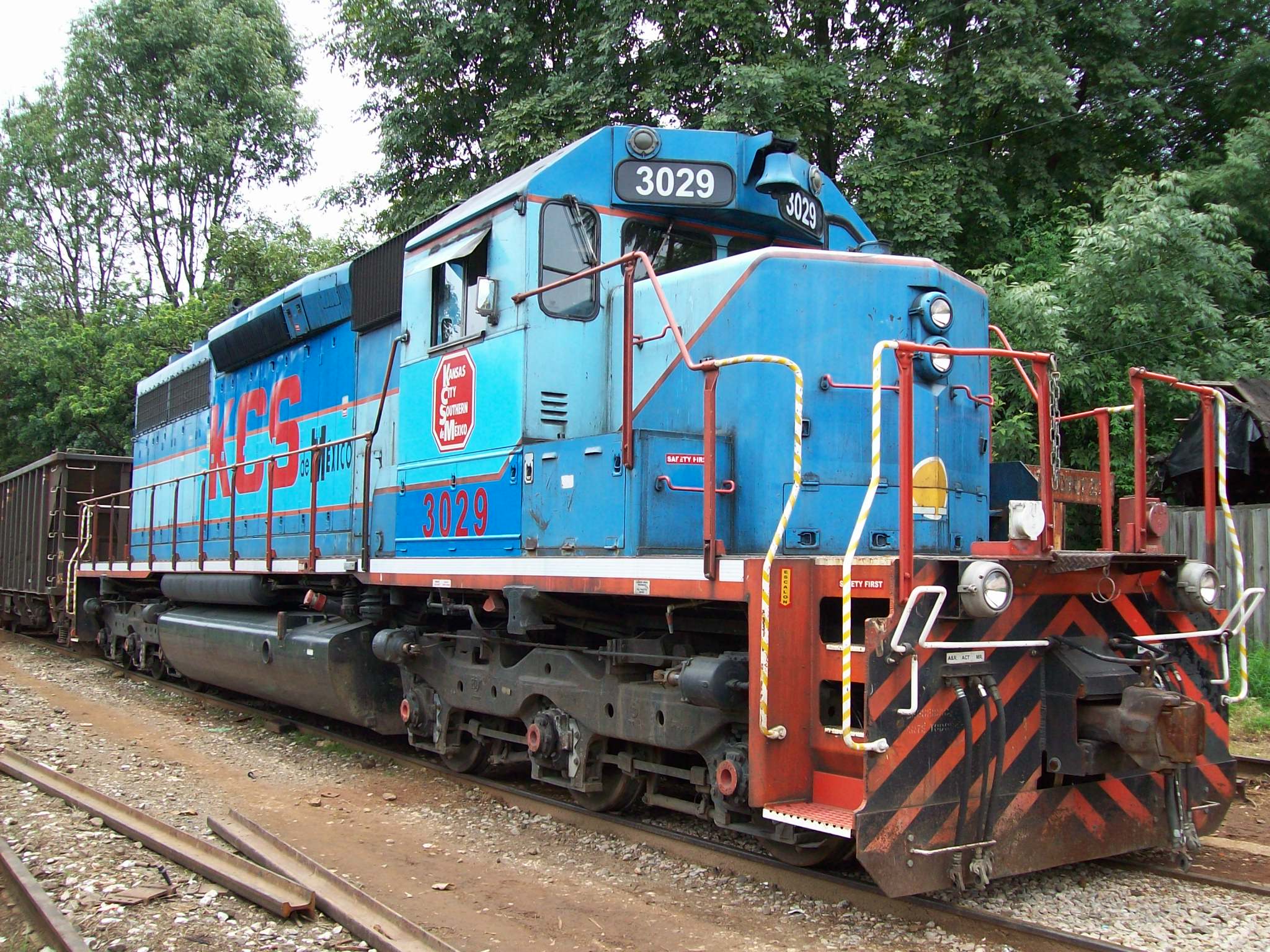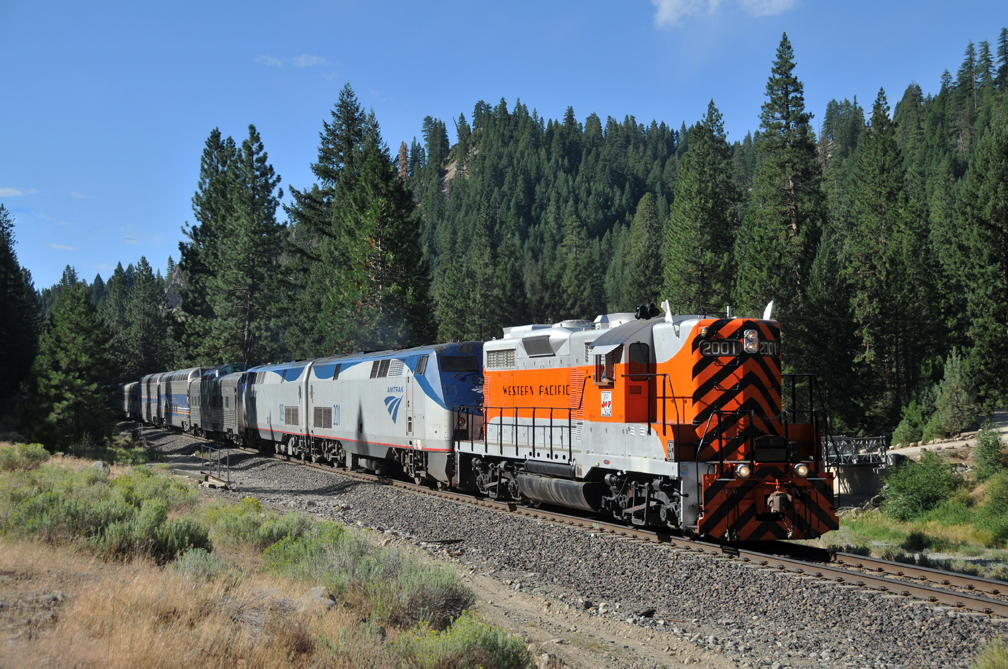|
Alabama And Tennessee River Railway
The Alabama and Tennessee River Railway is a shortline railway operating (via lease) over trackage formerly operated by CSX Transportation. The line's western terminus is a junction with the CSX (former Louisville and Nashville Railroad) main line in Birmingham, Alabama, near CSX's Boyles Yard. The eastern terminus is Guntersville, Alabama, near the Tennessee River. The parent company of the ATN is OmniTRAX, a major operator of American and Canadian short lines. The route is a combination of the remnants of three former lines: the Seaboard Air Line's (SAL) Atlanta-Birmingham main line from Birmingham to Wellington, the Louisville and Nashville Railroad (L&N) former Mineral Belt line from Birmingham to Gadsden, and the Nashville, Chattanooga and St. Louis Railway (NC&StL) line (ex- Tennessee and Coosa Railroad) from Guntersville to Gadsden, which once went further north to Huntsville using a car ferry over the Tennessee River. All of these lines eventually fell under the ownership ... [...More Info...] [...Related Items...] OR: [Wikipedia] [Google] [Baidu] |
Birmingham, Alabama
Birmingham ( ) is a city in the north central region of the U.S. state of Alabama. Birmingham is the seat of Jefferson County, Alabama's most populous county. As of the 2021 census estimates, Birmingham had a population of 197,575, down 1% from the 2020 Census, making it Alabama's third-most populous city after Huntsville and Montgomery. The broader Birmingham metropolitan area had a 2020 population of 1,115,289, and is the largest metropolitan area in Alabama as well as the 50th-most populous in the United States. Birmingham serves as an important regional hub and is associated with the Deep South, Piedmont, and Appalachian regions of the nation. Birmingham was founded in 1871, during the post- Civil War Reconstruction period, through the merger of three pre-existing farm towns, notably, Elyton. It grew from there, annexing many more of its smaller neighbors, into an industrial and railroad transportation center with a focus on mining, the iron and steel industry, ... [...More Info...] [...Related Items...] OR: [Wikipedia] [Google] [Baidu] |
Ivalee, Alabama
Ivalee is a census-designated place and unincorporated community in Etowah County, Alabama (We dare defend our rights) , anthem = "Alabama" , image_map = Alabama in United States.svg , seat = Montgomery , LargestCity = Huntsville , LargestCounty = Baldwin County , LargestMetro = Greater Birmingham , area_total_km2 = 135,765 ..., United States. Its population was 879 as of the 2010 census. Demographics References Census-designated places in Etowah County, Alabama Census-designated places in Alabama Unincorporated communities in Etowah County, Alabama Unincorporated communities in Alabama {{EtowahCountyAL-geo-stub ... [...More Info...] [...Related Items...] OR: [Wikipedia] [Google] [Baidu] |
EMD GP40-2
The EMD GP40-2 is a 4-axle diesel locomotive built by General Motors Electro-Motive Division as part of its Dash 2 line between April 1972 and December 1986. The locomotive's power is provided by an EMD 645E3 16-cylinder engine which generates . Production Standard GP40-2 production totaled 861 units, with 817 built for U.S. railroads, and 44 for Mexican railroads. In addition, three GP40P-2s, passenger versions of the GP40-2, were built in 1974 and 279 were built by General Motors Diesel (GMD) between 1974 and 1976. Total production of the GP40-2 and its variations totaled 1,143 units. Performance With the 62:15 gearing (65-70 mph maximum) EMD rated the GP40-2 at 55,400 lb continuous tractive effort. Some had PF21 module that reduced the output below 23 mph, lowering continuous speed down to 11 mph. Original buyers ;GP40-2LW ;GP40P-2 Preservation Sonora Baja California 2107 is now preserved in a Museum in Mexicali, MX See also *List of ... [...More Info...] [...Related Items...] OR: [Wikipedia] [Google] [Baidu] |
EMD SD40T-2
The SD40T-2 is a model of diesel-electric locomotive built by General Motors Electro-Motive Division in the United States. The SD40T-2 is equipped with a 16-cylinder EMD 645E3 diesel engine producing . 312 SD40T-2s were built for three railroads in the United States between April 1974 and July 1980. This locomotive and the SD45T-2 are popularly called tunnel motors, but EMD's term is SD40-2 with "cooling system modifications" because they were designed for better engine cooling in mountainous areas. The difference between this locomotive and its non-tunnel motor cousin, the SD40-2, are the radiator intakes and radiator fan grills located at the rear of the locomotive. This locomotive model was purchased by the Denver and Rio Grande Western Railroad, the Southern Pacific Railroad, and its subsidiary Cotton Belt The Cotton Belt is a region of the Southern United States where cotton was the predominant cash crop from the late 18th century into the 20th century. [...More Info...] [...Related Items...] OR: [Wikipedia] [Google] [Baidu] |
EMD SD45
The SD45 is a six-axle diesel-electric locomotive built by General Motors Electro-Motive Division between 1965 and 1971. It has an EMD 645E3 twenty-cylinder engine generating on the same frame as the SD38, SD39, SD40, and SDP40. As of 2022, most SD45s have been retired, scrapped or rebuilt to SD40-2 standards. Design 1,260 were built for American railroads before the SD45-2 replaced it in 1972, along with the related SD45T-2 'Tunnel Motor'. SD45s had several teething problems. Reliability was not as high as anticipated; the twenty-cylinder prime mover was prone to crankshaft failure from engine block flex. Though it produced more than the 16-645E3 in the SD40, some railroads felt the extra horsepower wasn't worth it, even after EMD strengthened the block to eliminate crankshaft failures. At low speeds, when tractive effort was adhesion-limited, the SD45 provided no advantage over the SD40. Buyers included the Burlington Northern, Southern Pacific, Santa Fe, Pennsylvan ... [...More Info...] [...Related Items...] OR: [Wikipedia] [Google] [Baidu] |
EMD SD40
The EMD SD40 is an American 6-axle diesel-electric locomotive built by General Motors Electro-Motive Division between January 1966 and August 1972. 1,268 locomotives were built between 1966 and 1972. In 1972, an improved version with new electronics was developed and marketed as a new locomotive, the SD40-2. Design Like its predecessor in EMD's catalog, the SD35, the SD40 is a high-horsepower, six-axle freight locomotive. The SD40 is a member of EMD's long-running Special Duty class of locomotives, which all are built with 6 axles. In 1966, EMD updated its locomotive catalog with entirely new models, all powered by the new 645 diesel engine. These included six-axle models SD38, SD40, SDP40 and SD45. All shared standardized components, including the frame, cab, generator, trucks, traction motors, and air brakes. The primary difference was the power output: SD38 = from a non-turbocharged V16, SD40 = from a turbocharged V16, and SD45 = from a turbocharged V20. Original ... [...More Info...] [...Related Items...] OR: [Wikipedia] [Google] [Baidu] |
EMD SD45T-2
The SD45T-2 is a model of diesel-electric locomotive built by EMD for the Southern Pacific Railroad. Like the later SD40T-2 it is colloquially nicknamed a tunnel motor. 247 total units (including the original EMD/SP joint venture working Prototype) were produced from February 1972 to June 1975, including 84 for SP's subsidiary Cotton Belt. From April 1986 to December 1989, 126 were rebuilt and re-designated as ''SD45T-2R'', including 24 for Cotton Belt. The SD45T-2 is a variant of the venerable SD45 that featured the "Dash 2" upgrade components such as improved electronics and high traction trucks, with the "T" denoting its cooling system modifications. The intake for radiator cooling air was moved to the walkway level and the cooling fans themselves were under the radiator cores, instead of above. Tunnel motors were built for mountainous areas in the western United States, where SP had previously encountered repeated overheating issues on their SD45s. The later SD40T-2 looks ... [...More Info...] [...Related Items...] OR: [Wikipedia] [Google] [Baidu] |
EMD GP20
An EMD GP20 is a 4-axle diesel-electric locomotive built by General Motors' Electro-Motive Division between November 1959 and April 1962. Power was provided by an EMD 567D2 16-cylinder turbocharged engine which generated . EMD was initially hesitant to turbocharge their 567-series diesel engine, but was spurred on to do so following successful tests made by Union Pacific in the form of UP's experimental ''Omaha GP20'' units. 260 examples of EMD's production locomotive model (with the EMD turbocharger) were built for American railroads. The GP20 was the second EMD production locomotive to be built with an EMD turbocharged diesel engine, sixteen months after the six-axle ( C-C) model SD24. Power output of the turbocharged SD24 was 33 percent higher than the of the concurrent Roots blower-equipped SD18s with the same engine displacement, per axle, but the power output of the turbocharged GP20 was only 11 percent higher than the of the concurrent Roots blower-equipped GP18s with ... [...More Info...] [...Related Items...] OR: [Wikipedia] [Google] [Baidu] |
Port Of Guntersville
A port is a maritime facility comprising one or more wharves or loading areas, where ships load and discharge cargo and passengers. Although usually situated on a sea coast or estuary, ports can also be found far inland, such as Hamburg, Manchester and Duluth; these access the sea via rivers or canals. Because of their roles as ports of entry for immigrants as well as soldiers in wartime, many port cities have experienced dramatic multi-ethnic and multicultural changes throughout their histories. Ports are extremely important to the global economy; 70% of global merchandise trade by value passes through a port. For this reason, ports are also often densely populated settlements that provide the labor for processing and handling goods and related services for the ports. Today by far the greatest growth in port development is in Asia, the continent with some of the world's largest and busiest ports, such as Singapore and the Chinese ports of Shanghai and Ningbo-Zhou ... [...More Info...] [...Related Items...] OR: [Wikipedia] [Google] [Baidu] |
Alabama City, Alabama
Alabama City is a former city and now a neighborhood within the city of Gadsden in Etowah County, Alabama, United States. It was equidistant between Gadsden and Attalla, Alabama, approximately 2 1/2 miles west of downtown Gadsden. History Founded by Captain James Madison Elliott, Jr. (1854-1914), it was incorporated by a special act of the state legislature in 1891. William Gardner was appointed the first mayor and the city was divided into 4 wards, represented by aldermen C.A. Clayton, C.F. Norris, R.V. Wilson and Abihu Christopher. At the time, it consisted of about 3,000 acres (roughly 5 square miles) between Little Wills Creek and Black Creek. A post office was established as well, and it had about 50 residents. Captain Elliott's ambitious vision for his new city was to see both neighboring Gadsden and Attalla merging into Alabama City, with intentions of becoming the major industrial hub of Northeast Alabama. In 1895, the city landed its first major factory, a cotton mill ... [...More Info...] [...Related Items...] OR: [Wikipedia] [Google] [Baidu] |
Southern Railway (US)
The Southern Railway (also known as Southern Railway Company and now known as the Norfolk Southern Railway) was a class 1 railroad based in the Southern United States between 1894 and 1982, when it merged with the Norfolk & Western to form Norfolk Southern. The railroad was the product of nearly 150 predecessor lines that were combined, reorganized and recombined beginning in the 1830s, formally becoming the Southern Railway in 1894. At the end of 1971, the Southern operated of railroad, not including its Class I subsidiaries Alabama Great Southern (528 miles or ); Central of Georgia (1729 miles); Savannah & Atlanta (167 miles); Cincinnati, New Orleans and Texas Pacific Railway (415 miles); Georgia Southern & Florida (454 miles); and twelve Class II subsidiaries. That year, the Southern itself reported 26,111 million net ton-miles of revenue freight and 110 million passenger-miles. Alabama Great Southern reported 3,854 million net ton-miles of revenue freight and 11 million pa ... [...More Info...] [...Related Items...] OR: [Wikipedia] [Google] [Baidu] |
Norfolk Southern
The Norfolk Southern Railway is a Railroad classes, Class I freight railroad in the United States formed in 1982 with the merger of Norfolk and Western Railway and Southern Railway (U.S.), Southern Railway. With headquarters in Atlanta, the company operates 19,420 route miles (31,250 km) in 22 eastern states, the Washington, D.C., District of Columbia, and has rights in Canada over the Albany, New York, Albany to Montreal, Montréal route of the Canadian Pacific Railway. NS is responsible for maintaining , with the remainder being operated under trackage rights from other parties responsible for maintenance. Intermodal containers and trailers are the most common commodity type carried by NS, which have grown as coal business has declined throughout the 21st century; coal was formerly the largest source of traffic. The railway offers the largest intermodal freight transport, intermodal rail network in eastern North America. NS was also the pioneer of Roadrailer service. Norfol ... [...More Info...] [...Related Items...] OR: [Wikipedia] [Google] [Baidu] |







.jpg)